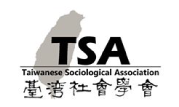中研院亞太中心2/14"Animal Feed Production and the Plantationocene in the Thailand-Myanmar Borderland"講座
2025-02-03
會議名稱:2025亞太新視域系列講座一|Animal Feed Production and the Plantationocene in the Thailand-Myanmar Borderland
講題:Animal Feed Production and the Plantationocene in the Thailand-Myanmar Borderland
講者:Dr. Jiraporn Laocharoenwong (Department of Anthropology and Sociology, Chulalongkon University, Thailand)
與談人:張雯勤 博士 (中央研究院 人社中心 亞太區域研究專題中心)
時間:2025年02月14日(週五)14:00-16:00【14:00-14:30報到】
地點:中央研究院 民族學研究所 第三會議室
主辦單位:中研院人社中心亞太區域研究專題中心
【報名資訊】
報名網址:https://forms.gle/adorniuoQoszi1od7
報名截止:2025年02月05日(週三)12:00
【摘要】
Over the past decades Chinese meat consumption has skyrocketed. Not able to meet demand due to a scarcity of agricultural land and geopolitical tensions with major beef-exporting countries, China has set its eyes on Southeast Asia as a supplier of meat, as well as a provider of ‘land to grow the meat’. The Central Dry Zone in Myanmar has a large cattle surplus, and a quasi-legalized food supply chain has come into existence over the last decade. Yet Myanmar cattle are scrawny, need fattening and care before China will accept them. The borderland area straddling Northwest Thailand and Southeast Myanmar has emerged as an area where the Anthropocene and Plantationocene become entangled. This is a longtime conflict zone: cattle and other animals pass the border as refugees from several ethnic groups flee from the Burmese army. Forested areas are converted into agricultural land to grow corn, cassava, rice, and hay for animal feed production, while burning stalks after every harvest season causes massive swaths of PM 2.5 and air pollution over Northwestern Thailand, covering Chiang Mai province in a haze for a few months each year. Agricultural laborers are largely undocumented migrants from Myanmar, whose lives have come to depend on the ‘illegal but licit’ work in precarious conditions for the purposes of crop and animal feed production. While macro-level impacts of meat production are well-described in terms of required land and water resources, this paper sheds light on its many meso-level entanglements and argues that the Plantationocene manifests itself clearly in this Myanmar-Thailand borderland.

講題:Animal Feed Production and the Plantationocene in the Thailand-Myanmar Borderland
講者:Dr. Jiraporn Laocharoenwong (Department of Anthropology and Sociology, Chulalongkon University, Thailand)
與談人:張雯勤 博士 (中央研究院 人社中心 亞太區域研究專題中心)
時間:2025年02月14日(週五)14:00-16:00【14:00-14:30報到】
地點:中央研究院 民族學研究所 第三會議室
主辦單位:中研院人社中心亞太區域研究專題中心
【報名資訊】
報名網址:https://forms.gle/adorniuoQoszi1od7
報名截止:2025年02月05日(週三)12:00
【摘要】
Over the past decades Chinese meat consumption has skyrocketed. Not able to meet demand due to a scarcity of agricultural land and geopolitical tensions with major beef-exporting countries, China has set its eyes on Southeast Asia as a supplier of meat, as well as a provider of ‘land to grow the meat’. The Central Dry Zone in Myanmar has a large cattle surplus, and a quasi-legalized food supply chain has come into existence over the last decade. Yet Myanmar cattle are scrawny, need fattening and care before China will accept them. The borderland area straddling Northwest Thailand and Southeast Myanmar has emerged as an area where the Anthropocene and Plantationocene become entangled. This is a longtime conflict zone: cattle and other animals pass the border as refugees from several ethnic groups flee from the Burmese army. Forested areas are converted into agricultural land to grow corn, cassava, rice, and hay for animal feed production, while burning stalks after every harvest season causes massive swaths of PM 2.5 and air pollution over Northwestern Thailand, covering Chiang Mai province in a haze for a few months each year. Agricultural laborers are largely undocumented migrants from Myanmar, whose lives have come to depend on the ‘illegal but licit’ work in precarious conditions for the purposes of crop and animal feed production. While macro-level impacts of meat production are well-described in terms of required land and water resources, this paper sheds light on its many meso-level entanglements and argues that the Plantationocene manifests itself clearly in this Myanmar-Thailand borderland.




